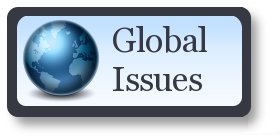After surprise US bombing raids on Iranian uranium enrichment facilities over the weekend, the head of the UN-backed nuclear watchdog on Monday appealed for immediate access to the targeted sites to assess the damage that is likely “very significant”.
Rafael Grossi, head of the International Atomic Energy Agency (IAEA), was addressing the agency’s Board of Governors, amid fresh reports of new Israeli missile strikes on Iranian military sites in Tehran and elsewhere earlier on Monday. Iranian weapons fire has also been reported across Israel.
Mr. Grossi - who also addressed an emergency meeting of the UN Security Council on Sunday - insisted that the agency’s weapons inspectors should return to Iran’s nuclear sites and account for their stockpiles.
There is particular concern about 400 kilogrammes of uranium enriched to 60 per cent by Iran.
Under the terms of a 2015 nuclear deal with the international community, Iran is permitted to enrich the naturally occurring radioactive material to less than four per cent.
“Craters are now visible at the Fordow site, Iran's main location for enriching uranium at 60 per cent, indicating the use of ground-penetrating munitions; this is consistent with statements from the United States,” he told the IAEA Board of Governors. “At this time, no one including the IAEA, is in a position to have fully assessed the underground damage at Fordow.”
Mr. Grossi said that taking into account the highly explosive payload used in the US attacks, “very significant damage is expected to have occurred” to thehighlysensitive centrifuge machinery used to enrich uranium at Fordow.
Several sites hit
Fordow is one of several nuclear-related sites across Iran that are known to have been damaged in the strikes by the United States, including those in Esfahan, Arak and Tehran.
In comments to the UN Security Council in New York on Sunday, the IAEA chief said that although radiation levels remained normal outside these nuclear facilities, deep concerns remained about Iran’s operational nuclear plant at Bushehr.
Any strike on Bushehr could trigger a massive radiation release across the region - “the risk is real”, Mr. Grossi said.
Eleven days after Israel launched air and missile strikes at Iranian military and nuclear sites, some 430 people are believed to have been killed in Iran, most of them civilians.
According to Israeli reports, 25 people have been killed and more than 1,300 injured by Iranian missile strikes.
Terror and hoarding
Inside Iran, many people are sleep-deprived after 10 days of Israeli strikes and afraid that they have nowhere to go.
Testimonies shared with UN News of events indicate that internet access is extremely limited and that people are queueing for hours to stock up on food and fuel. “Even bread has been scarce at times,” said one Iranian national, who noted that those with dual nationality have been leaving the country.
The crisis has also increased problems for the elderly and infirm – “not for lack of money, but because their caregivers have disappeared”, she added.
Meanwhile in Israel, civilians impacted by Iranian missile attacks have spoken of their shock at the destruction of their homes, echoing calls for peace in Iran.
“We came to try to evacuate some equipment left at our flats, which were totally collapsed by the direct heat of the missile yesterday morning,” one Israeli resident said in an online testimony published on Monday. “So, that's it, the entire house is gone.”
Another resident explained that he was returning to his apartment which had been “totally destroyed by a missile landed under my window - and luckily I wasn't here.”
Explained: Why striking nuclear facilities risks catastrophe
IAEA safety experts have warned repeatedly that armed attacks on nuclear infrastructure - enrichment facilities or reactors – risk damaging containment systems and lead to the release of dangerous levels of radioactive or toxic materials.
“Armed attacks on nuclear facilities should never take place and could result in radioactive releases with grave consequences within and beyond the boundaries of the State which has been attacked,” IAEA chief Mr. Grossi told the agency’s Board of Governors on Monday.
Even well-fortified facilities are not immune from structural or systemic failure when subjected to extreme external force, such as missile strikes, the UN-backed nuclear watchdog has said.
A range of threats
The potential consequences include localized chemical exposure and far-reaching radioactive contamination, depending on the nature of the site and the strength of its defensive barriers.
At enrichment or conversion facilities, the primary hazard often comes from uranium hexafluoride (UF₆). If struck and exposed to moisture, this radioactive compound of uranium and fluorine can break down into hydrogen fluoride - a highly toxic gas that can cause burns and respiratory damage.
Radiation risks at these enrichment sites are typically lower than at reactors, although chemical hazards can have severe local impacts, IAEA said.
In contrast, reactor cores and spent-fuel pools hold large inventories of fission products which result from nuclear reactions, such as iodine-131 and cesium-137. A breach here could result in large-scale radioactive dispersal, especially if cooling systems fail. IAEA has warneds that such events may cause a “loss-of-coolant” accident, potentially releasing radioactivity in the form of radionuclides into the atmosphere.
Different sites and risks
Iran’s nuclear programme includes a range of facilities with varying risk profiles, reports indicate. The Bushehr nuclear power plant, Iran’s only operational commercial reactor, remains undamaged but contains significant radioactive material under IAEA safeguards.
Research reactors including the Tehran facility are smaller, while the Arak heavy-water reactor, struck recently, held no nuclear material at the time.
Enrichment plants at Natanz and Fordow are fortified and underground, limiting the spread of radiation despite recent damage. However, conversion sites such as Isfahan involve uranium hexafluoride (UF₆), raising the risk of toxic chemical exposure if containment is breached.
International legal frameworks and UN resolutions strongly prohibit military action against peaceful nuclear facilities. The IAEA stresses that any such strike endangers not just national safety, but regional and global stability.
Where next?
Latest news
Read the latest news stories:
- Women in Afghanistan Face a Total Lack of Autonomy Monday, June 23, 2025
- Afghanistans Children in Dire Need of an Acceleration in Nutrition Action Monday, June 23, 2025
- Bombing Iran Is Part of the USAs Repetition Compulsion for War War War Monday, June 23, 2025
- Extreme Weather Will Place Toll on Asia's Economies and Ecosystems, Says World Meteorological Organization Monday, June 23, 2025
- The Path to Peace Between Israel and Iran Monday, June 23, 2025
- UN 80 Restructuring: No Office or Agency will be Exempted from Staff Layoffs Monday, June 23, 2025
- Iran-Israel crisis: IAEA chief calls for access to damaged nuclear sites Monday, June 23, 2025
- INTERVIEW: Visitors to Expo 2025 appreciate ‘positive vision’ of UN Sunday, June 22, 2025
- Gaza: UN warns of ‘weaponised hunger’ and growing death toll amid food chaos Sunday, June 22, 2025
- US strikes on Iran’s nuclear sites ‘marks perilous turn’: Diplomacy must prevail, says Guterres Sunday, June 22, 2025
Link to this page from your site/blog
Add the following HTML code to your page:
<p><a href="https://www.globalissues.org/news/2025/06/23/40231">Iran-Israel crisis: IAEA chief calls for access to damaged nuclear sites</a>, <cite>Inter Press Service</cite>, Monday, June 23, 2025 (posted by Global Issues)</p>… to produce this:
Iran-Israel crisis: IAEA chief calls for access to damaged nuclear sites, Inter Press Service, Monday, June 23, 2025 (posted by Global Issues)

 3 weeks ago
13
3 weeks ago
13








 English (US) ·
English (US) ·